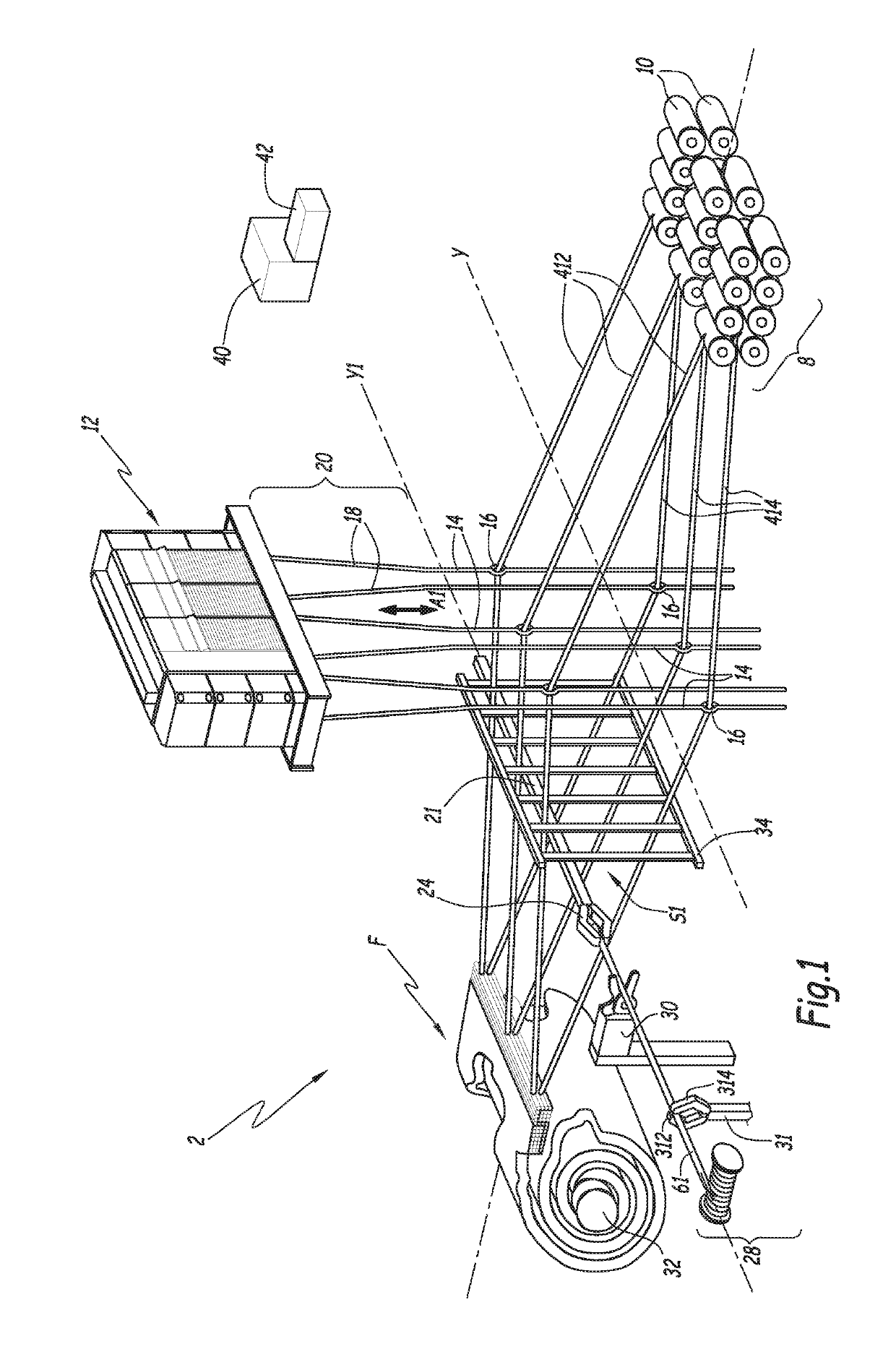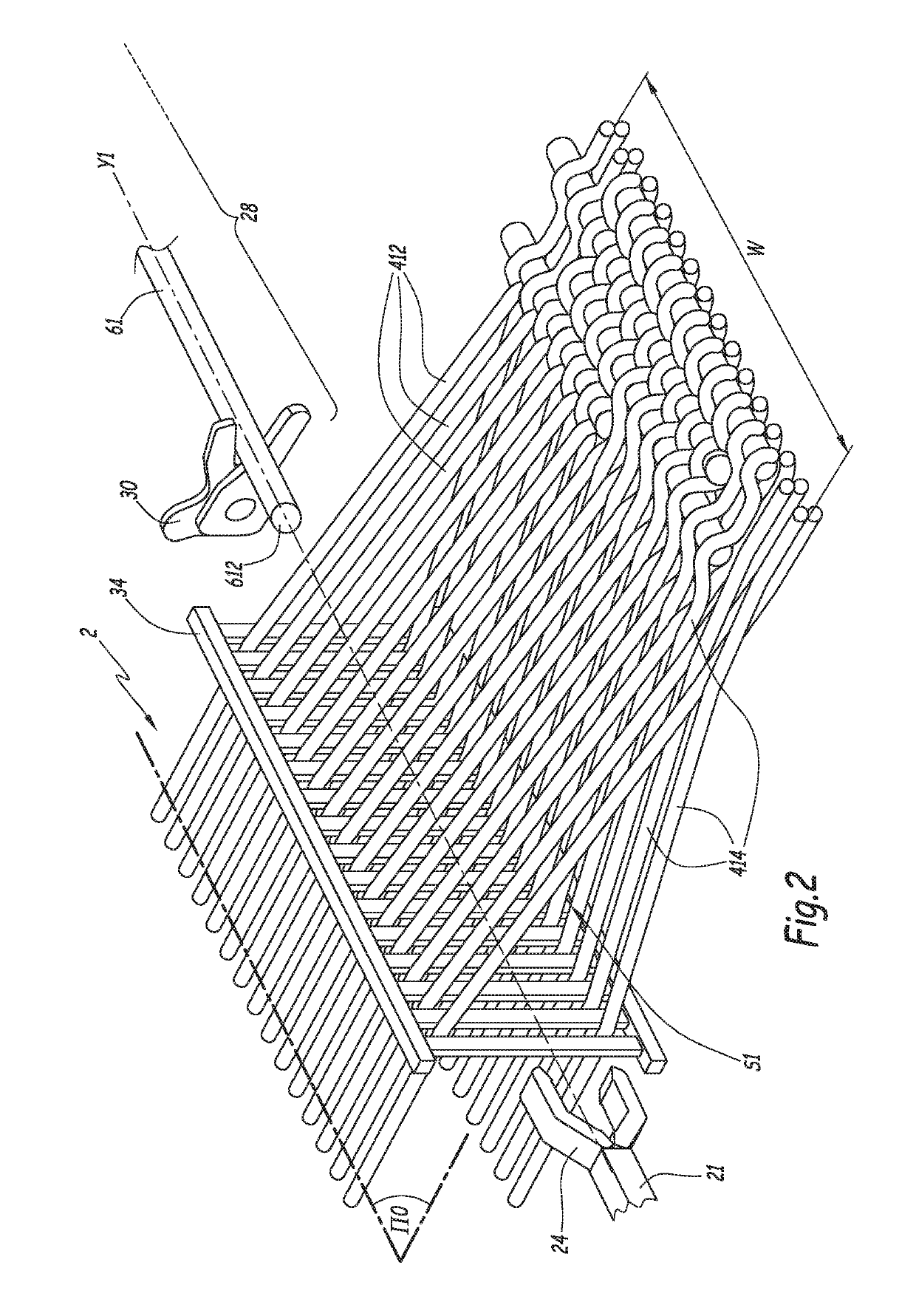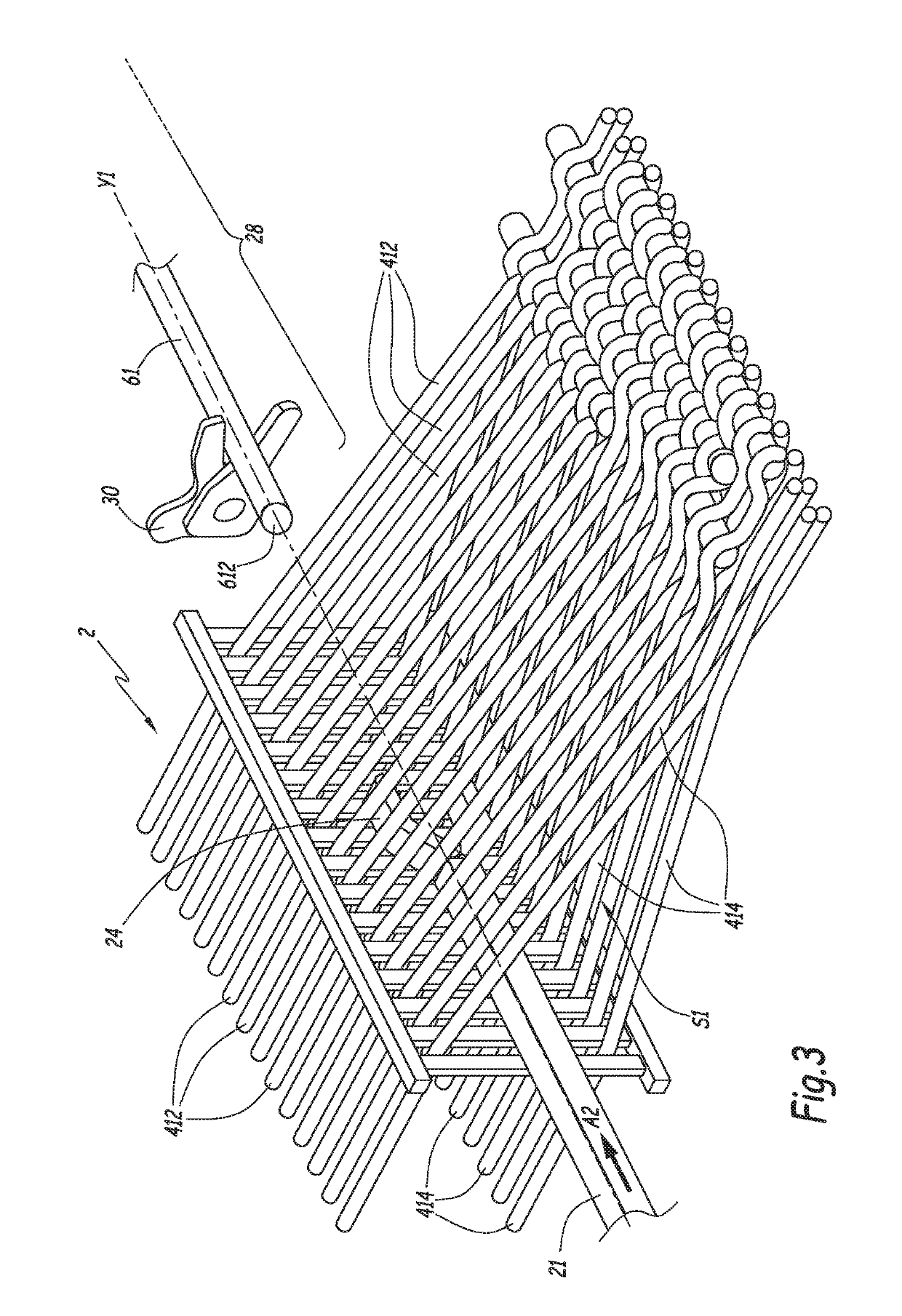Method for weaving a fabric, near-net shape fabric woven via such a method and weaving loom for implementing this method
a technology of weaving loom and fabric, which is applied in the direction of looms, leno shedding mechanisms, textiles and paper, etc., can solve the problems of large waste of materials, inability to fully avoid material waste, and inflexible known looms, so as to avoid material waste to a large extent
- Summary
- Abstract
- Description
- Claims
- Application Information
AI Technical Summary
Benefits of technology
Problems solved by technology
Method used
Image
Examples
Embodiment Construction
[0045]The method of the invention can be implemented on a loom of the type shown on FIG. 1. This loom 2 is used to weave together some warp yarns 412, and 414 and some weft yarns 61 and 62.
[0046]On FIG. 1, loom 2 defines a single shed S1, but the invention can also be implemented with a loom defining two superposed sheds S1 and S2, as shown on FIGS. 14 to 17.
[0047]The warp yarns come from a creel 8 which includes yarn packages 10 supplying the warp material to the loom. Alternatively, a warp beam stand can be used instead of creel 8. Creel 8 or the warp beam stand forms a warp delivery unit for loom 2. The warp yarns are made from polyester, polyamide or another relatively cheap thermoplastic material. Alternatively, they can be made from glass, carbon or another more elaborated material.
[0048]The weft yarns are reinforced with fibers or made of fibers, such as carbon, Kevlar, aramid or glass fibers. In this example, they are more elaborated and more expansive than warp yarns 4.
[004...
PUM
 Login to View More
Login to View More Abstract
Description
Claims
Application Information
 Login to View More
Login to View More - R&D
- Intellectual Property
- Life Sciences
- Materials
- Tech Scout
- Unparalleled Data Quality
- Higher Quality Content
- 60% Fewer Hallucinations
Browse by: Latest US Patents, China's latest patents, Technical Efficacy Thesaurus, Application Domain, Technology Topic, Popular Technical Reports.
© 2025 PatSnap. All rights reserved.Legal|Privacy policy|Modern Slavery Act Transparency Statement|Sitemap|About US| Contact US: help@patsnap.com



